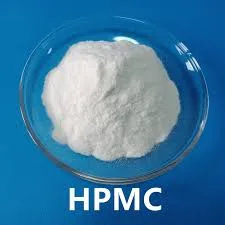
Там . 16, 2024 19:23 Back to list
HPMC Applications in Tile Adhesive Formulation and Performance Enhancement
Understanding HPMC for Tile Adhesive
Hydroxypropyl Methylcellulose (HPMC) is a versatile and widely used cellulose ether in the construction industry, particularly in tile adhesives. As a non-ionic, water-soluble polymer, HPMC is prized for its ability to enhance the performance and workability of construction materials. In this article, we will explore the properties, applications, and benefits of using HPMC in tile adhesive formulations.
What is HPMC?
HPMC is derived from cellulose, a natural polymer found in plant cell walls. The modification process includes hydroxypropyl and methyl substitution, which alters the solubility and thermal properties of the cellulose. This results in a product that is not only hydrophilic but also improves adhesion, viscosity, and water retention. HPMC comes in various grades tailored to different applications, with properties such as viscosity, gel temperature, and degree of substitution influencing its use in tile adhesives.
Benefits of HPMC in Tile Adhesives
1. Enhanced Workability One of the primary advantages of incorporating HPMC into tile adhesives is the improvement in workability. HPMC increases the viscosity of the adhesive mixture, allowing for better binding and manipulation during application. The increased adhesion helps prevent slippage, ensuring that tiles stay in place during the setting process.
2. Water Retention HPMC significantly enhances water retention in tile adhesives. This property is crucial, especially when working with porous substrates or in hot and dry environments where moisture loss can occur rapidly. Improved water retention ensures that the adhesive remains workable for longer periods, allowing ample time for adjustments while applying tiles.
hpmc for tile adhesive

3. Improved Adhesion HPMC modifies the surface tension of the adhesive, enhancing the bond between the tile and the substrate. This leads to stronger adhesion, reducing the likelihood of tiles popping off over time. The longevity and durability of the tile installation are greatly improved, making HPMC a favored choice among contractors.
4. Versatility HPMC’s versatility allows it to be used in various formulations, whether for ceramic tiles, porcelain, or natural stone. This flexibility means that manufacturers can develop customized adhesives to meet specific project requirements, leading to enhanced performance in diverse conditions.
5. Ease of Use The incorporation of HPMC into tile adhesive formulations simplifies the mixing and application process. It allows for easy dispersion in water, forming a homogeneous mixture without lumps. This characteristic makes it user-friendly, ensuring that both professional installers and DIY enthusiasts achieve consistent results.
Environmental Considerations
As environmental sustainability becomes increasingly important in the construction industry, HPMC stands out as a green alternative. Being derived from renewable resources, it offers a lower environmental impact compared to some synthetic additives. Additionally, because HPMC is non-toxic and free from harmful solvents, it contributes to healthier indoor air quality during and after application.
Conclusion
In summary, Hydroxypropyl Methylcellulose plays a crucial role in the formulation of modern tile adhesives, offering numerous benefits that lead to better performance and user satisfaction. Its unique properties enhance workability, improve water retention and adhesion, and provide versatility for various applications. As the construction industry continues to evolve, the importance of incorporating effective and environmentally friendly materials like HPMC will only increase. Whether you are a contractor or a DIY enthusiast, understanding the advantages of HPMC in tile adhesive is essential for achieving superior installation results.
-
tile-bonding-additives-for-stronger-bonds
NewsAug.22,2025
-
construction-grade-rdp-for-wholesale-needs
NewsAug.22,2025
-
trusted-wholesale-hec-partners
NewsAug.22,2025
-
hec-solutions-for-industrial-excellence
NewsAug.22,2025
-
construction-additives-need-hpmc-essentials
NewsAug.22,2025
-
hpmc-versatile-cellulose-ether-for-industries
NewsAug.22,2025







